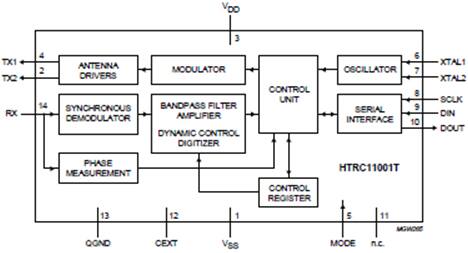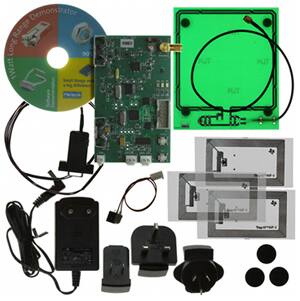RFID: The Basics
投稿人:电子产品
2011-07-07
Radio-frequency identification (RFID) technology is used to transfer information wirelessly through radio waves for the purpose of data identification and tracking. It consists of an antenna, transceiver, and transponder (known as either a tag or smart label). An RFID system also requires the appropriate software. Today, we usually see the antenna and transceiver combined into one reader (also known as a scanner or interrogator). The advantage of RFID is that it requires no physical contact or line of site connection.
ABI Research (Oyster Bay, NY) has forecast that revenue of radio frequency identification (RFID) technology will exceed $6 billion in 2011. RFID technology is used everywhere. From personal use, such as marathons timers, highway toll or fuel payments, and library checkouts, to business use, for medical care, asset tracking, and theft prevention.
In medical/pharmaceutical applications, for example, the benefits are significant. RFID improves patient safety and offers real-time tracking of medication. In construction, RFID helps companies manage receiving material inventory, as well as reducing theft and managing tools. In energy applications, RFID can improve safety in the natural gas industry or improve operations with the utility industry. RFID also is used to enhance social networking by linking the real world with online communities.
Tags
An RFID tag is either passive (no battery) or active (battery powered). A passive tag reflects the radio signal from the reader (the only component that is powered), and an active tag transmits the radio signal. A passive RFID read range is generally short (from 4 in. to 15 ft), while an active RFID read range is much longer, up to 300 ft. The tag's antenna picks up the signal from the RFID reader and then returns the signal, which can include data, such as a serial number or other type of information.
Tags can be read-only, read/write, or WORM (write once, read many) and offer sizes from 16 bits to greater than 512 Kbytes. Frequency ranges can be from 125 kHz to 5.8 GHz and price ranges are between 50 cents and $250.
Smart label tags offer more functionality because they combine human-readable information and bar code technology with RFID. A smart label tag consists of an adhesive label that is embedded with an ultra-thin RFID tag "inlay” – an IC plus an aluminum, copper or silver antenna, bonded on a substrate).
For recent developments in RFID tags read Maury Wright's article, "New RFID Tag Features Expand Application Possibilities".
Readers
A reader is an RF transmitter/receiver, controlled by an MCU or DSP. The combination of a reader and antenna (integrated in the reader or external to the reader) receives the data from tags and passes it to the computer for processing. Depending on the application, the distance between the reader's antenna and the tag may vary. The frequency, the antenna gain, the orientation and polarization of the reader antenna and the transponder antenna, and where the tag is placed on the object will all have an impact on the RFID system's read range. A reader can be fixed (as seen in entrances/exits in a clothing store) or portable (in the case of a handheld device used for scanning tags).
Existing RFID devices
Atmel offers the TK5551 tag that is a completely programmable R/W part and implements all important functions for identification systems, including anti-collision (for example, 10 transponders in less than 500 ms, depending on the application). This plastic-packaged device accommodates the IDIC e5551 R/W component along with the antenna, and an LC-circuit. No additional external power supply is necessary for the transponder because it receives power from the RF field generated by the basestation.
NXP offers the HTRC11001T reader IC, which combines all analog RFID reader hardware in a small SO14 package. This device is designed for easy integration into RF identification readers. A powerful antenna demodulator and driver, together with a low-noise adaptive sampling time demodulator, a programmable filter, amplifier and digitizer, make up a complete transceiver unit for high-performance readers (Figure 1).

Design engineers new to RFID may want to start with a development kit. The Melexis part contains everything needed – a reader board, an antenna board, three transponder cards, a power supply, RS-232 cable, software, and documentation (Figure 2) – all reasonably priced.

Additional parts can be found on the Digikey website under the section RFID.
References:
- NDIA RFID Seminar "Overview of RFID” by Pete Cipriani
- Basics of RFID Technology (.ppt) by Craig K.Harmon
- Zebra Technologies, www.zebra.com
免责声明:各个作者和/或论坛参与者在本网站发表的观点、看法和意见不代表 DigiKey 的观点、看法和意见,也不代表 DigiKey 官方政策。









 中国
中国